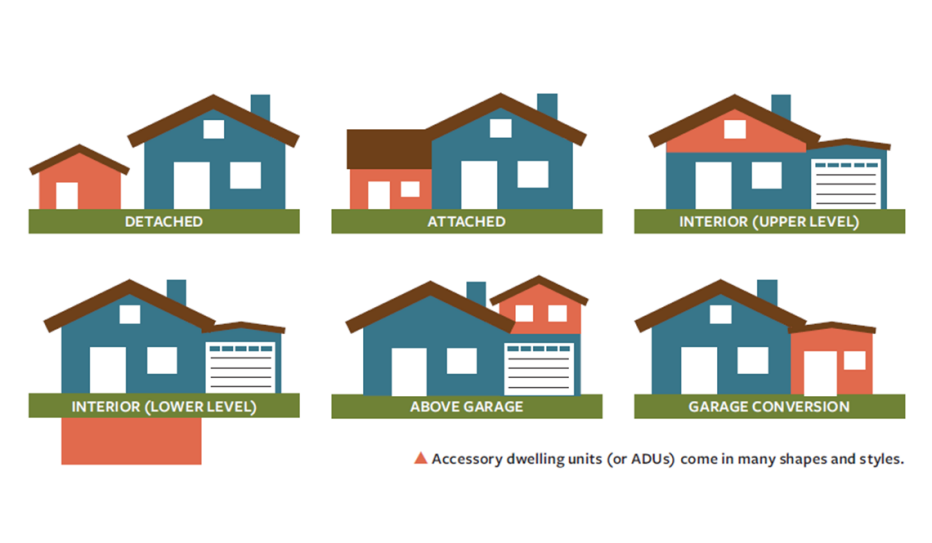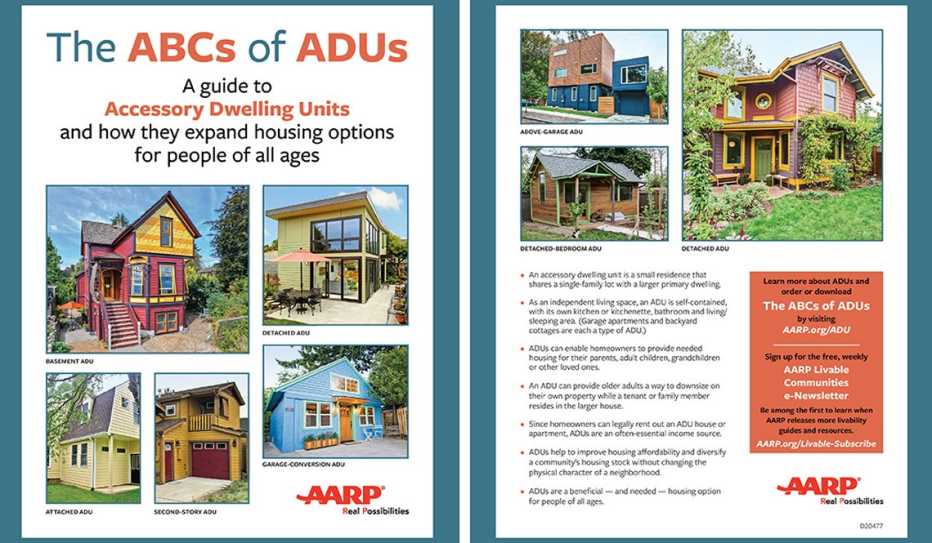AARP Hearing Center

CARY, NC -- North Carolinians are quite familiar with the challenge of finding affordable housing, especially for those looking in the state’s growing urban and coastal communities where a surge in demand, limited housing supply, and in-migration have all contributed to an increase in housing costs.
According to the North Carolina Housing Finance Agency, median home prices were over 51 percent higher at the end of 2023 than in the year 2000.
When it comes to both affordable housing and a viable option for family caregivers, Accessory Dwelling Units (ADUs) have been growing in popularity in communities across the state and nation. However, local zoning ordinances and regulations often stand in the way of quicker adoption of these small residences that share a single-family lot with a larger, primary dwelling.
The Town of Cary, a member of the AARP Network of Age Friendly States and Communities, voted unanimously in April to simplify the rules that allow for the development of ADUs.
Although some people have never heard the term, accessory dwelling units — or ADUs — have been around for centuries and are identified by many different names.
To be clear about what’s being discussed:
- As an independent living space, an ADU is self-contained, with its own kitchen or kitchenette, bathroom and sleeping area
- An ADU can be located within, attached to or detached from the main residence
- An ADU can be converted from an existing structure (such as a garage) or built anew
- ADUs can be found in cities, in suburbs and in rural areas, yet are often invisible from view because they’re positioned behind or are indistinct from the main house
- Because ADUs are built on single-family lots as a secondary dwelling, they typically cannot be partitioned off to be sold separately
- An ADU can provide rental income to homeowners and an affordable way for renters to live in single-family neighborhoods
- An ADU can enable family members to live on the same property while having their own living spaces — or provide housing for a hired caregiver
- Unlike tiny houses, ADUs are compact but not teeny, so they’re a more practical option for individuals, couples and families seeking small, affordable housing
- For homeowners looking to downsize, an ADU can be a more appealing option than moving into an apartment or, if older, an age-restricted community
- ADUs can help older residents remain in their community and “age in place”
AARP Associate State Director for the Triangle Region Heather Burkhardt has been working with the Town of Cary and other Triangle communities to enable more widespread adoption of ADUs as one option for affordability, the ability of caregivers to have their loved ones nearby, and as rental income for some homeowners. Burkhardt said, “More and more people are looking at ADUs because they are created in many different shapes and styles, they’re able to fit discreetly into all sorts of communities, including suburban subdivisions, row-house streets (either with or without backalleys), walkable town or urban neighborhoods — and, of course, large lots and rural regions.”
When it comes to the state being slow to build more ADUs, "Forget finger-pointing at buyers — government rules are the bottleneck," warned The John Locke Foundation. Realtor Curtis Stone in the Carolina Journal said when it comes to affordable housing, the culprit isn’t market failure, its government overreach. “Ubiquitous single-family zoning, lot-size minimums, and excessive codes choke supply, driving costs beyond reach. ,” Stone explained.
The Council approved several changes to take place in June 2025 including allowing detached ADUs in all single-unit, detached-dwelling residential districts; increasing the maximum ADU size from 33% to 50% with a maximum 800 square feet as compared to the primary dwelling, (or an allowance for ADUs of up to 1,000 square feet for lots that are 40,000 square feet or greater); and requiring one parking space per ADU regardless of the number of bedrooms.

Visit AARP.org/ADU for links to more articles and to order AARP's free publications about accessory dwelling units.































































